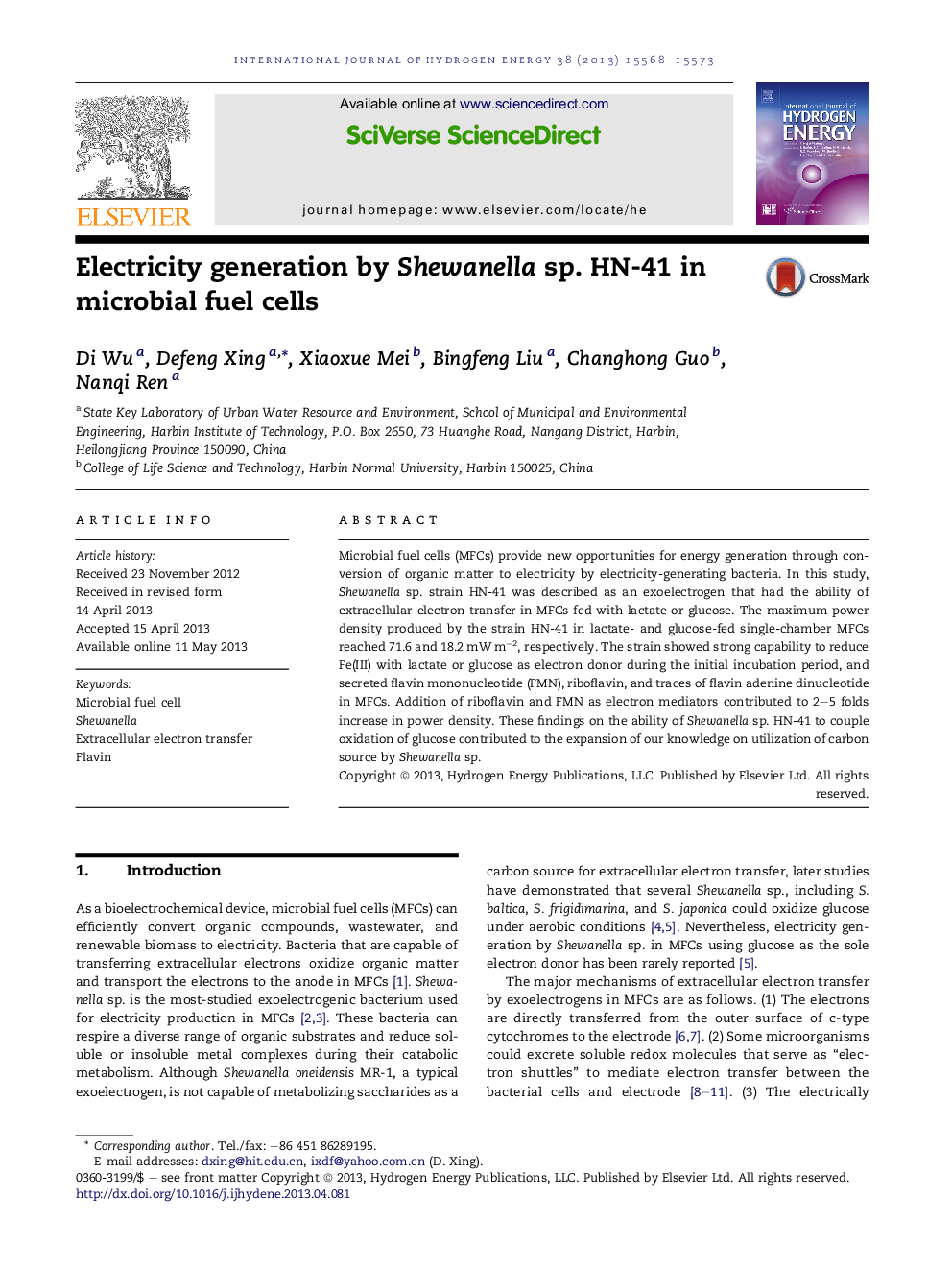| Article ID | Journal | Published Year | Pages | File Type |
|---|---|---|---|---|
| 7721434 | International Journal of Hydrogen Energy | 2013 | 6 Pages |
Abstract
Microbial fuel cells (MFCs) provide new opportunities for energy generation through conversion of organic matter to electricity by electricity-generating bacteria. In this study, Shewanella sp. strain HN-41 was described as an exoelectrogen that had the ability of extracellular electron transfer in MFCs fed with lactate or glucose. The maximum power density produced by the strain HN-41 in lactate- and glucose-fed single-chamber MFCs reached 71.6 and 18.2Â mWÂ mâ2, respectively. The strain showed strong capability to reduce Fe(III) with lactate or glucose as electron donor during the initial incubation period, and secreted flavin mononucleotide (FMN), riboflavin, and traces of flavin adenine dinucleotide in MFCs. Addition of riboflavin and FMN as electron mediators contributed to 2-5 folds increase in power density. These findings on the ability of Shewanella sp. HN-41 to couple oxidation of glucose contributed to the expansion of our knowledge on utilization of carbon source by Shewanella sp.
Related Topics
Physical Sciences and Engineering
Chemistry
Electrochemistry
Authors
Di Wu, Defeng Xing, Xiaoxue Mei, Bingfeng Liu, Changhong Guo, Nanqi Ren,
